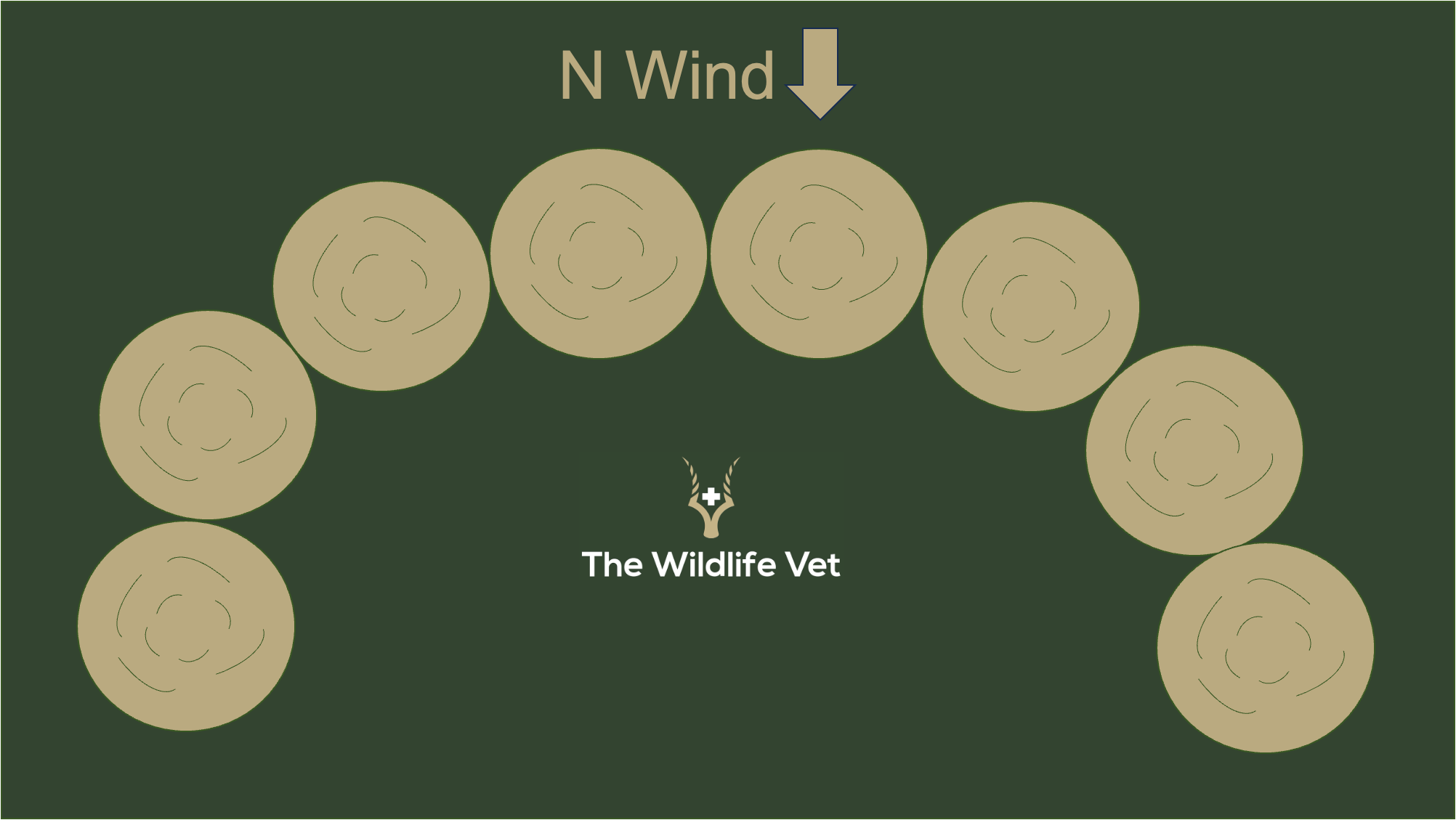Cold Weather Prep for Native & Exotic Wildlife
Nov 06, 2025
When the forecast turns ugly, you don’t want the first hard freeze to be your stress test. A short cold snap can hit exotics—especially African and tropical hoofstock—like a hammer. With a bit of planning, you can keep animals comfortable, protect facilities, and make life easier on your team.
Very few ranches I visit are prepared for cold weather. Let's change that. Here are some of my favorite things to do. If you have something you do that makes a difference, reach out to me and I will add it to the list.
1) Map Your Risk (Before It Gets Cold)
Not all cold stress is about the number on the thermometer. Wind, damp coats, and sudden temperature swings are what push animals over the edge. Walk your property with a critical eye and mark the trouble spots:
-
Shelter openings that face the north wind
-
Low, wet ground that never fully dries
-
Pastures with little natural windbreak
-
Pens with mixed species or ages that might not get along where timid animals may be pushed out of shelter
Prioritize sensitive groups—neonates, late-gestation females, seniors, thin individuals, and any animal recovering from illness.
2) Shelter & Bedding Animals Will Actually Use
The best shelter is the one your animals choose. Make it obvious, dry, and calm.
-
Options that work: simple sheds, U-shaped (or Semi-circle) hay-bale windbreaks, or brush piles.
-
Train the habit: feed at or near shelters so animals associate those spaces with safety and reward.
-
Block the draft: close or baffle openings that face prevailing winds (often from the north).
-
Heat, carefully: heat lamps can help—use safe fixtures with proper clearance and protected cords.
-
Deep bedding: lay dry straw or hay so animals are off cold, wet ground; refresh as soon as it packs or gets damp.
-
Design for behavior: in larger shelters, add dividers so animals that dislike each other can share the building without conflict. Leave a small gap behind dividers so babies and smaller animals can slip behind and avoid being pushed out.
3) Water: Keep It Liquid and Palatable
Cold weather turns water management into a daily (sometimes hourly) job—and dehydration magnifies cold stress.
-
Use heated troughs, immersion heaters, or insulated tanks and check them multiple times per day during a freeze.
-
Stage spare buckets and a plan for power loss.
-
Pre-hydrate before a front. It sounds counterintuitive, but well-hydrated animals regulate temperature better. It takes a lot of energy to change water temperature; getting good volumes in before the cold hits helps them ride out the swing.
-
Trough warmers keep water just warm enough to encourage drinking.
4) Nutrition: Fuel the Furnace
Cold raises caloric needs. Plan to feed more—and feed smart.
-
Forage first. Fiber fermentation produces internal heat (that “furnace effect” is real).
-
Add higher-calorie supplements during extended cold snaps to maintain condition.
-
Stock extra feed before winter and ahead of forecast storms; assume roads or deliveries may be delayed.
-
Watch appetite: a sudden drop can be an early sign of cold stress or illness—intervene early.
5) Health Monitoring & A Simple Team Plan
Cold stress can escalate quickly. Increase eyes-on checks when temperatures plunge.
What to watch: shivering, hunching, isolation, lethargy, or reduced feed intake. If you see it, move the animal to a warmer space, add bedding, block wind, and escalate supportive care.
Before each front:
-
Test heating and watering systems (and have spares on hand).
-
Confirm backup power readiness and fuel.
-
Assign duties: who checks water, who feeds, who monitors at-risk pens, who is on after-hours.
-
Stage extra bedding and windbreak materials where you’ll need them.
6) Fuel & Feed Reserves You Can Count On
Winter weather loves to disrupt supply chains. Keep enough on-site to ride out several days—a week for larger outfits.
-
Fuel: Maintain backup fuel for generators, heaters, and water systems. Store safely, label clearly, and test equipment before winter.
-
Feed: Keep an emergency reserve of hay and concentrates in dry, accessible storage. Rotate stock so it stays fresh and mold-free.
Pro tip: Run the math now. Estimate your herd’s daily energy and water needs so your reserve actually covers a multi-day freeze without rationing.
Notes & Small Upgrades that Pay Off
-
Shelter training: Feed near shelters so animals learn those spaces are safe.
-
North wind block: Aim openings away from prevailing winds; add temporary panels or bales if needed.
-
Bedding depth: Put down thick hay/straw specifically where animals prefer to lie.
-
Dividers with a baby gap: Simple partitions reduce fighting; that small gap behind them gives babies a safe pocket.
-
Forage = heat: The chemistry of digesting fiber produces warmth—lean into good hay.
-
Water strategy: Encourage big drinks before the front. Use trough warmers to keep water appetizing during the freeze.
A 48-Hour Cold-Front Countdown (Quick Checklist)
48–24 hours out
-
Walk shelters; plug drafts; stage bedding and windbreaks
-
Top off fuel; test generator and heaters
-
Fill and pre-warm troughs; verify heaters and cords
-
Pre-position extra hay and concentrate near high-risk pens
-
Brief staff on roles and escalation steps
During the front
-
Check water AM / midday / PM (more if temps keep falling)
-
Spot-check at-risk animals for shivering, isolation, or feed refusal
-
Add bedding and block new drafts as they appear
After the front
-
Replace wet bedding; inspect for injuries or weight loss
-
Rebalance rations if body condition dipped
-
Note what worked—and what to improve before the next front
Bottom Line
Cold stress is generally somewhat predictable—and preventable. By tightening up shelter and bedding, guaranteeing liquid water, feeding for heat, and running a simple team plan with real reserves, you’ll keep native and exotic wildlife safe, comfortable, and eating all winter long. A few targeted upgrades and clear roles are the difference between scrambling in the cold and a smooth, low-stress response when temperatures fall.
Stay connected with news and updates!
Join our mailing list to receive the latest news and updates from our team.
Don't worry, your information will not be shared.
We hate SPAM. We will never sell your information, for any reason.



